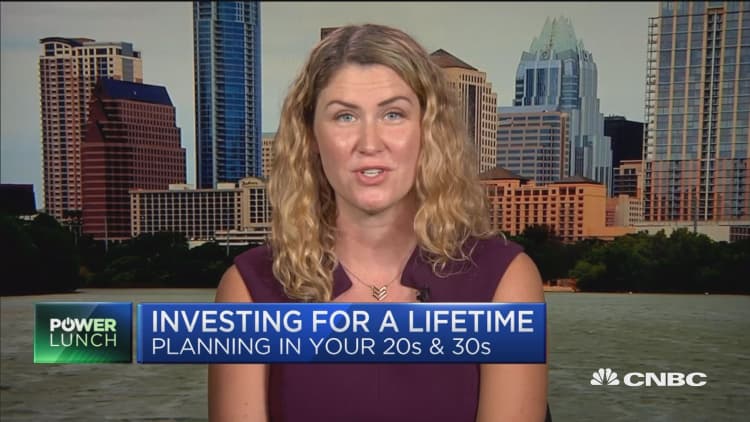Your imagination could be a key to boosting your retirement savings.
A hidden experiment included in recent research suggests that workers could be motivated to save more if they picture their future self, rather than only focusing on the dollars and cents involved.
The research, conducted by investment manager Capital Group, involved a survey of 1,202 adults of varying income levels, ages 21 to 71. Much of the study explored respondents' views of retirement, including how they expect to fund their golden years. Included, though, was a twist unknown to participants.
Here's how the secret experiment worked: Half of the group were asked how much they should set aside for retirement via a payroll deduction. After answering, they tackled questions that explored how they want their life to look in their 60s, 70s and 80s.
For example, one question asked respondents what they expect to be doing at each of those decades of life, with potential answers ranging from making new friends or being politically active to pursuing a passion or making the world a better place.
Other questions touched on their anticipated health later in life and whether they would travel or spend time with friends and family.

For the other half, however, those "envisioning" questions came first — and then participants answered how much people should set aside from their paychecks.
On average, the second group recommended saving 31 percent more. Among millennials, the suggested amount was 52 percent higher. For women, it was 42 percent higher.
"The takeaway is simple but powerful — if you can envision your retirement, it can positively impact how much you're saving," said Heather Lord, senior vice president and head of strategy and innovation at Capital Group.
Of course, filling out a survey and actually taking action to save more are separate things. The next step, Lord said, would be for 401(k) plan sponsors and the like to help workers visualize what they're saving for before deciding how much of their income to put toward their nest egg.
"Imagine having an envisioning exercise before making a decision," Lord said.
By and large, retirement savers can use all the help they can get. Research from the Stanford Center on Longevity suggests people generally should be saving twice what they actually are.
And while many people have access to a 401(k) or similar plan through work, which can make retirement savings easier, many savers are falling short. For example, among those ages 50 to 59, the median 401(k) balance — half are below, half are above — is $62,700, according to personal finance website NerdWallet. For those ages 60 to 69, it's $63,000.
Health-care costs alone for the average 65-year-old couple retiring today are estimated to be $280,000 in retirement, research from Fidelity Investments shows.
Retirement savers appear to know that they need to step it up. In the Capital Group survey, 85 percent of respondents said Americans need to save more to better prepare for their golden years.
More from Personal Finance:
If you're a young adult and receive a small windfall, here's how to put it toward retirement
Paying off debt is a pressing issue for Gen X and younger boomers
These non-essential costs are probably getting in the way of your financial goals






